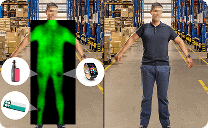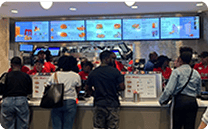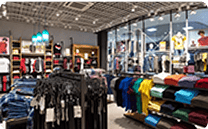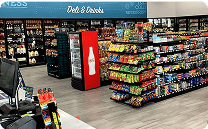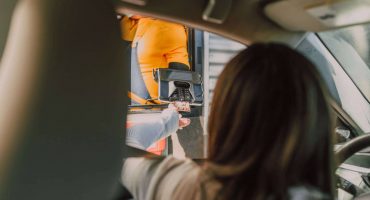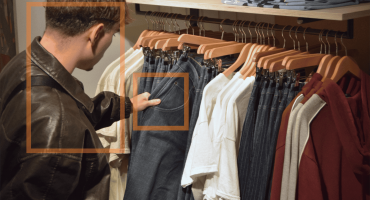In This article
One question that is always at the top of all retailers’ minds is, “What is loss prevention in retail?” Few questions cause as much anxiety among retailers. It’s a challenge that requires careful planning and wise investment in strategies, technologies, and employee training to reduce shrinkage, the primary cause of loss.
What may trouble retailers even more is that loss directly impacts revenues, profitability, and business sustainability. Finding answers to the question, “What is loss prevention in retail?” and acting on the answers will also affect customer satisfaction and employee loyalty.
Causes of Retail Loss
One or more of the four primary causes of retail loss likely occur daily at most retailers. Some may be consciously aware of the security gaps in their operations and be frustrated that they don’t know all they should do to stem the flow of retail loss. Other store owners may be oblivious to some of these causes, leaving them scratching their heads trying to determine why they can’t seem to increase sales and profitability.
Combating retail loss first requires a knowledge base. Retailers can’t focus on implementing the solutions to minimize shrinkage if they don’t know the causes of retail loss.
- Shoplifting (external theft) – Shoplifting is often the most common cause of retail loss, requiring a focus on shoplifting prevention. Of the retailers participating in the survey for the National Retail Federation (NRF) 2024 report, The Impact of Retail Theft & Violence, 71% were more concerned about shoplifting and 76% about organized retail crime shoplifting than the previous year.
- Employee theft (internal fraud)—Employees can cause retail loss in many ways. They can steal merchandise, much like shoplifters. They can manipulate the POS system to obtain customers’ credit card information. They can commit inventory or invoicing fraud in cahoots with vendors or drivers.
- Administrative errors – These errors can pose a challenge because they don’t involve illegal actions. Retailers often detect pricing mistakes and inventory mismanagement only after they conduct financial and inventory audits.
- Vendor fraud—Some vendors may appear to be ethical businesspeople, but without thorough vetting, unscrupulous vendors may use invoice scams and product mislabeling to take advantage of unsuspecting retailers.
Loss Prevention Strategies
With a better understanding of what loss prevention is in retail, store owners and chain operators can start planning and implementing loss prevention strategies that plug the shrinkage gaps. Retailers should know all the valuable tools to ensure they select those that will address their specific loss prevention needs.
- Store layout improvements –Shoplifters look for low-light areas, narrow aisles, and corners where employees and CCTV cameras may not spot them. Reconfiguring displays and free-standing racks to eliminate these “hiding” places can deter shoplifting.
- Surveillance measures—Neither store management nor employees can continuously watch all entrance areas, the shopping floor, the checkout counter, and the inventory space. Retail surveillance (security cameras, alarms, alerts, and monitoring systems) is a proven strategy for identifying and responding to all forms of theft and fraud.
- Anti-theft devices – RFID technology alerts staff when someone removes merchandise illegally. Each item carries a microchip and antenna that send signals about its location. Smart shelf technology notifies employees when someone removes an item, allowing them to monitor customer behavior.
- Strong inventory control policies – Retailers use RFID technology to automate inventory management and security oversight. They also integrate this technology into their retail security and POS systems.
- Awareness training – Employers train staff to improve awareness as a vital part of security and loss prevention. When employees recognize suspicious behavior, they can help reduce shoplifting and other criminal incidents.
Role of Loss Prevention Officers
Loss prevention officers are more likely to work for retail operations with multiple locations. They have the expertise and experience to implement strategies to minimize loss and supervise day-to-day security efforts. Loss prevention officer duties include:
- Monitoring customer behavior—Loss prevention officers watch the store and customers in real time, as their other duties allow, or review video data to identify behaviors and look for new shoplifting tricks.
- Investigating internal theft—Loss prevention officers will investigate incidents when an employee is caught committing merchandise theft or credit card fraud.
- Collaborating with law enforcement – A loss prevention officer may be the point of contact with local law enforcement. They can assist each other quickly and seamlessly to thwart illegal activities and arrest the perpetrators.
- Using technology for fraud detection – Loss prevention officers must be familiar with the security technologies currently used in retail stores and with emerging technologies. They can recommend changes or additions to security systems, so retailers know they have the latest loss prevention tools.
Technology in Loss Prevention
Technological innovations have impacted every industry, revolutionizing retail security and boosting loss prevention. Criminals, especially those in organized retail crime, also know how to use available technologies to aid them in their nefarious activities. Cybercriminals are often tech geniuses but are using their expertise illegally.
- AI-powered retail surveillance—Security cameras have protected retail stores and all types of businesses for decades. The newest security cameras incorporate Artificial Intelligence (AI) to protect retailers better.
- RFID technology – A system that tags every merchandise item with a unique identifier and mini-antenna allows retailers to track all inventory as it moves from the backroom to the shop floor to the POS system.
- POS fraud detection systems—POS technology can track transactions in real time and identify potentially fraudulent activities. Rules and standards are programmed into these systems, so transaction data that exceeds those parameters is noted for evaluation.
- Predictive analysis for theft protection—The combination of AI algorithms and machine learning capabilities can process retail analytics to learn the behavior patterns of customers and employees.
Policies and Legal Considerations
As much as retailers want to stop or minimize retail loss, their security systems, processes, and procedures must operate within the law and federal, state, and local government regulations.
- Shoplifter apprehension laws—Although these laws have some commonalities, there can be subtle differences. Retailers must know their legal limits when apprehending and holding a suspected shoplifter.
- Employee monitoring and privacy laws—Retailers may have legitimate reasons for monitoring employees or may receive their consent. In either case, federal and state employee monitoring laws regulate this practice. To protect the rights of employees and retailers, ownership should document and share monitoring policies with employees.
- Ethical considerations – Beyond written laws, retailers can maintain a positive reputation when they respect customers’ and employees’ rights. Any aggressive response to shoplifting or employee fraud should be tempered and only used as a last resort.
- Compliance—By following the “letter of the law,” retailers are less likely to be sued. Careful documentation and video footage from security cameras or during interviews are another layer of legal protection for retailers.
- Legal advice and law enforcement collaboration—Retailers should seek legal advice to create a comprehensive monitoring policy, learn the subtleties of local laws, and train employees. Collaborating with local law enforcement can create a trusting relationship, and officers can also train employees about the specifics of apprehension and detention.
Corporate and Retail Chain Approaches
Corporate-based retail and retail chains suffer from retail loss due to shoplifting, employee theft, and other fraud, just like the smallest retail shop. Big retail chains are sometimes the target because criminals think those stores can afford the loss. Many of the biggest chains have corporate loss prevention programs, utilizing advanced security strategies and technologies to protect their bottom lines.
- The Home Depot – The company uses facial recognition and license plate recognition technology to stop criminals and improve loss prevention. It uses “machine learning and AI processing to draw out patterns, link events, and help direct our teams to the most important workflows.”
- Walmart – Self-checkout at Walmart is where advanced loss prevention technology is valuable. Cameras with AI track customers’ scanning of items to reveal those not scanned. AI technology enhances facial recognition so Walmart’s security personnel can identify repeat offenders.
- Best Buy—Considering the high-end electronics in Best Buy stores, it’s no surprise that management relies on locked cases and tags that only employees can unlock or disable. The company has also reduced the number of self-checkout stations and utilized advanced security cameras to provide better views of all store activities.
Employee Involvement in Loss Prevention
Employees have always been critical of retail loss prevention. Advanced security technologies provide large and small retailers with ever-greater levels of security, and employees complement those efforts with thorough training and diligence.
- Proactive customer interaction—An employee greeter at the front door enhances customer service and allows the employee to profile each customer for potential signs of a shoplifter. Employees positioned across the shopping floor are close to where shoplifting can occur.
- Training – Employees must know where all security devices are located, understand object, facial recognition, and motion detection, and be fully knowledgeable about store security policies and procedures.
- Boosting employee morale—Employees who participate in proactive and continuous security measures are apt to have more trust in their employers and feel more secure in their person and job.
- Employee theft prevention—When employees are actively involved in loss prevention, they are more likely to recognize that ownership will not tolerate theft and will deal with it quickly.
Emerging Trends in Retail Loss Prevention
Even with the implementation of the most advanced technologies and comprehensive employee training, shoplifters and other criminals will continue their reprehensible activities, and employees will try to commit fraud. Emerging trends in retail loss prevention are addressing old and new threats.
- Biometrics—In a retail setting, biometric technology measures the physical attributes and behavior of customers and employees. Biometrics assist in loss prevention through store access control and identify individuals viewed by retail surveillance.
- Facial recognition security—CCTV cameras can recognize faces with greater clarity with the combination of AI and sharper, high-definition lenses. AI algorithms and machine learning analyze faces so they’re easily recognizable in the future.
- Increasing organized retail crime (ORC)—The survey of retailers for the National Retail Federation (NRF) 2024 report, The Impact of Retail Theft & Violence, also found that 40% of retailers were concerned about smash-and-grab incidents and 38% about ORC burglaries.
- New fraud tactics in e-commerce and omnichannel retail – As more retail occurs online and often via mobile devices, criminals commit fraud in the digital world. Tactics include creating new identities, bot-assisted attacks, using AI for deepfakes, advanced spoofing, and social engineering attacks.
Conclusion
With the information in this thought leadership piece, retailers of all sizes know the answer to the question, “What is loss prevention in retail?” Many know that the four primary causes of retail shrinkage are shoplifting, employee theft, administrative errors, and vendor fraud. Minimizing that shrinkage is often the bigger challenge for retailers. Because the problem is so significant, retailers need a multi-prong strategy, from store layout improvements to retail surveillance measures to employee training.
Advanced technologies, specifically AI and RFID, are available to retailers to implement their loss prevention strategies, plug their security gaps, and maximize profitability. Success also requires carefully crafted policies related to legal and ethical considerations and employee involvement. DTiQ has over 25 years of experience in loss prevention and a nationwide team of loss prevention experts. Contact us to learn more.
Frequently Asked Questions
Q: What is loss prevention in retail?
A: Loss prevention in the retail industry is any means large and small retailers implement to reduce shrinkage by combating shoplifting, employee fraud, and other causes of retail loss.
Q: What are actionable loss prevention strategies?
A: To maximize the prevention of retail loss, retailers need a comprehensive retail surveillance and monitoring system, strong inventory control policies, and employee training, especially improving their awareness skills. Some retailers may benefit from access control systems and an upgraded store layout to improve sightlines and customer flow.
Q: Which technologies will help retailers implement their retail loss prevention strategies?
A: AI is now integrated with many CCTV cameras, monitoring hardware, and POS systems. Identifying suspicious activities, improving employee theft prevention, especially credit card fraud, and using video data analysis to learn and predict behavior patterns are some of the technologies making a major contribution to reducing retail loss.
Q: What are the legal considerations when combating retail loss?
A: Shoplifter apprehension laws can vary from jurisdiction to jurisdiction, so retailers must know their local laws. Similarly, employee monitoring laws and regulations protect customers’ and employees’ privacy. Retailers that are fully compliant with these various laws and regulations are more likely to avoid lawsuits.
